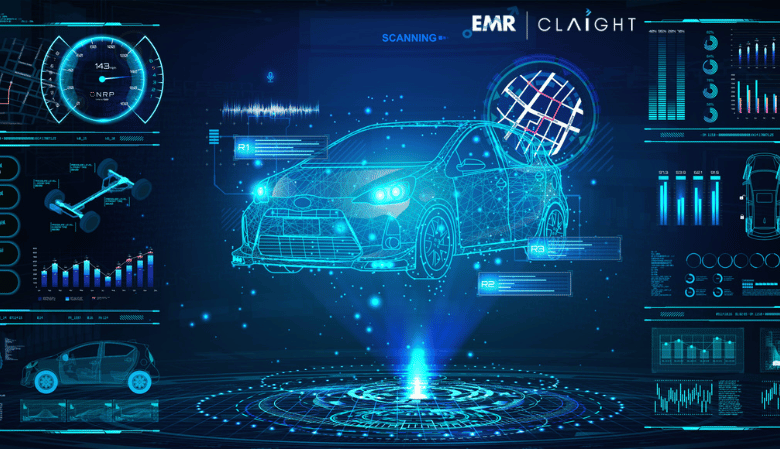Automotive Prognostics Market Size, Share, Trends, Forecast 2024-2032
The global automotive prognostics market is expected to grow at a CAGR of 55% from 2024 to 2032,

Global Automotive Prognostics Market
The global automotive prognostics market size is projected to grow at an exceptional compound annual growth rate (CAGR) of about 55% during the forecast period from 2024 to 2032. This rapid growth is primarily driven by the increasing adoption of electric vehicles (EVs), advancements in connected car technology, and the growing focus on predictive maintenance. North America is one of the largest regions for the automotive prognostics market, with significant contributions from the U.S. and Canada.
Market Overview
Automotive prognostics is an advanced technology that uses data analytics, artificial intelligence (AI), machine learning (ML), and the Internet of Things (IoT) to predict the health and performance of a vehicle’s components and systems. By analyzing data from various sensors and monitoring systems in real-time, prognostics enable vehicle owners and fleet managers to anticipate potential failures, schedule timely maintenance, and optimize vehicle performance. This technology plays a critical role in enhancing vehicle safety, minimizing downtime, and reducing repair costs.
As modern vehicles become increasingly connected and dependent on software-driven systems, the demand for automotive prognostics is on the rise. The technology’s ability to provide early warnings of potential component failures and improve vehicle reliability is particularly important for electric vehicles (EVs), which have complex electronic systems and high maintenance requirements. As a result, the growth of the automotive prognostics market is closely tied to the rising adoption of EVs.
Get a Free Sample Report with Table of Contents@ https://www.expertmarketresearch.com/reports/automotive-prognostics-market/requestsample
Key Market Drivers
- Rising Demand for Electric Vehicles (EVs): One of the primary drivers of the automotive prognostics market is the increasing adoption of electric vehicles. EVs rely heavily on advanced electronic systems, battery management systems, and drivetrain components, all of which require continuous monitoring to ensure optimal performance. Prognostics play a crucial role in EVs by predicting potential issues such as battery degradation, motor failures, or electronic component malfunctions. As global efforts to reduce carbon emissions and promote clean energy continue, the demand for EVs and, consequently, automotive prognostics will rise significantly.
- Advancements in Connected Car Technology: The rise of connected car technology has fueled the demand for automotive prognostics. Modern vehicles are equipped with various sensors, GPS, telematics systems, and onboard diagnostic tools that collect and transmit data in real time. Prognostics systems use this data to analyze the health of vehicle components and predict failures before they occur. The integration of AI and ML algorithms enhances the accuracy and reliability of these predictions, helping manufacturers and fleet operators improve vehicle efficiency and reduce maintenance costs.
- Growing Focus on Predictive Maintenance: Predictive maintenance is becoming a key focus area for the automotive industry, as it helps reduce vehicle downtime, increase operational efficiency, and extend the lifespan of vehicle components. Prognostics enable proactive maintenance by providing early warnings about potential failures, allowing vehicle owners and fleet managers to schedule repairs or part replacements before issues escalate. This approach reduces the likelihood of sudden breakdowns, lowers repair costs, and improves vehicle safety.
- Increase in Vehicle Longevity and Reliability: Automotive prognostics help improve the longevity and reliability of vehicles by continuously monitoring critical systems such as engines, transmissions, brakes, and batteries. By identifying potential issues early, vehicle owners can take corrective actions before significant damage occurs, ensuring their vehicles remain in good working condition for longer periods. This is particularly important for fleet operators who need to maintain high levels of vehicle availability and minimize disruptions to operations.
- Growing Use of AI and Big Data Analytics: The integration of AI and big data analytics into automotive prognostics is revolutionizing the way vehicles are monitored and maintained. AI-driven algorithms can process vast amounts of data from vehicle sensors and onboard systems to detect patterns, anomalies, and trends that indicate potential failures. These technologies enhance the accuracy of failure predictions and enable more efficient decision-making for maintenance and repairs. As AI and big data technologies continue to advance, the capabilities of automotive prognostics are expected to grow, further driving market expansion.
Regional Outlook: North America Leading the Market
North America is one of the largest regions for the automotive prognostics market, driven by high levels of technological adoption, a robust automotive industry, and the increasing use of connected car technologies. The U.S. and Canada are at the forefront of the market, with leading automotive manufacturers and tech companies investing in prognostics solutions to enhance vehicle performance and safety.
In North America, the growing adoption of electric vehicles, along with government initiatives to promote clean energy and reduce carbon emissions, is accelerating the demand for prognostics systems. The region’s well-developed infrastructure for connected vehicles, coupled with strong R&D capabilities, makes it a key market for innovation in automotive prognostics.
Read Full Report with Table of Contents@ https://www.expertmarketresearch.com/reports/automotive-prognostics-market
Market Segmentation
The global automotive prognostics market can be segmented based on vehicle type, application, and region.
- By Vehicle Type:
- Passenger Vehicles: Passenger vehicles, particularly electric cars and luxury vehicles, are increasingly adopting prognostics to enhance reliability, safety, and performance.
- Commercial Vehicles: Commercial fleets, including trucks, buses, and delivery vans, are significant users of prognostics, as the technology helps optimize fleet management, reduce maintenance costs, and minimize downtime.
- By Application:
- Battery Management Systems: In electric vehicles, prognostics play a crucial role in monitoring and predicting the health of batteries, which are critical for vehicle performance and longevity.
- Engine and Powertrain Monitoring: Prognostics systems analyze data from the engine and powertrain components to predict potential issues such as overheating, wear, or mechanical failures.
- Braking and Suspension Systems: Prognostics help monitor the health of braking and suspension systems, ensuring safe and reliable vehicle operation.
- Telematics and Fleet Management: Prognostics are used in telematics systems to provide real-time data on vehicle health, performance, and maintenance needs, enabling efficient fleet management.
- By Region:
- North America: North America is leading the market, driven by the widespread adoption of connected car technologies and electric vehicles.
- Europe: Europe is a key market for automotive prognostics, particularly in countries like Germany and the U.K., where electric vehicles and advanced automotive technologies are widely adopted.
- Asia-Pacific: Asia-Pacific is expected to experience rapid growth, fueled by the rising adoption of electric vehicles and increasing investments in automotive technology in countries like China, Japan, and South Korea.
- Latin America and Middle East & Africa: These regions are emerging markets for automotive prognostics, with growing demand for connected car technologies and predictive maintenance solutions.
Challenges
Despite the strong growth outlook, the automotive prognostics market faces several challenges. One of the key challenges is the high cost of implementation, as integrating AI, big data, and sensor systems into vehicles can be expensive. However, as technology continues to advance, the cost of these systems is expected to decrease, making prognostics more accessible to a wider range of vehicles.
Another challenge is data privacy and security concerns. Since prognostics rely on real-time data from vehicles, ensuring the security and privacy of this data is critical. Automakers and technology providers will need to address these concerns to build trust and ensure compliance with data protection regulations.
Future Outlook
The global automotive prognostics market is expected to experience significant growth as the demand for electric vehicles and connected car technologies continues to rise. With a projected CAGR of about 55% during the forecast period, advancements in AI, machine learning, and big data analytics will play a crucial role in shaping the future of the market. As more automakers and fleet operators adopt prognostics solutions, the technology will become an integral part of vehicle maintenance and performance optimization.
As the market expands, companies that invest in innovation, data security, and cost-effective solutions will be well-positioned to capitalize on the opportunities in this rapidly growing industry.
Media Contact:
Company Name: Claight Corporation
Email: sales@expertmarketresearch.com
Toll Free Number: +1-415-325-5166 | +44-702-402-5790
Address: 30 North Gould Street, Sheridan, WY 82801, USA
Website: www.expertmarketresearch.com
Aus Site: https://www.expertmarketresearch.com.au/





